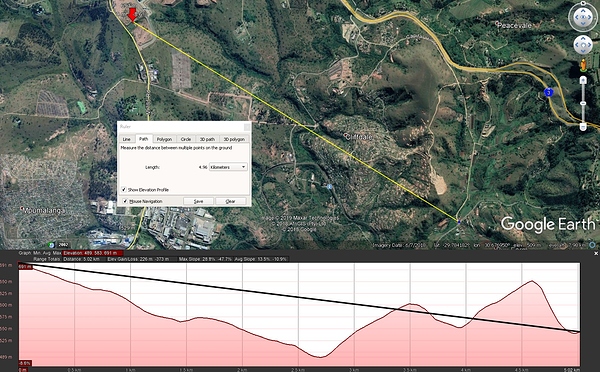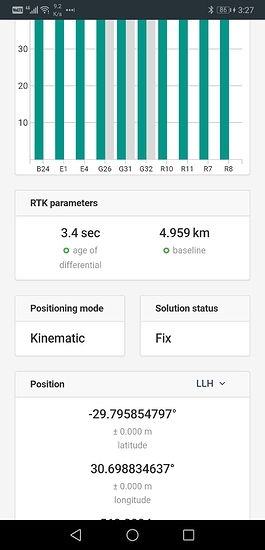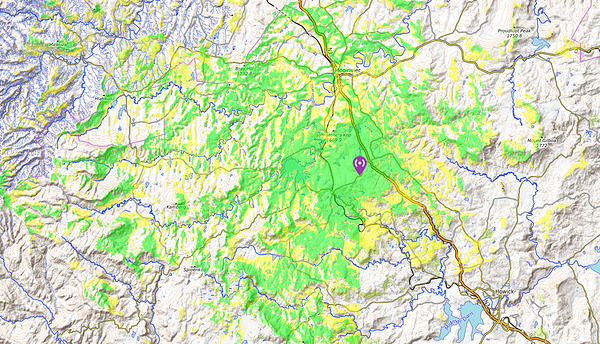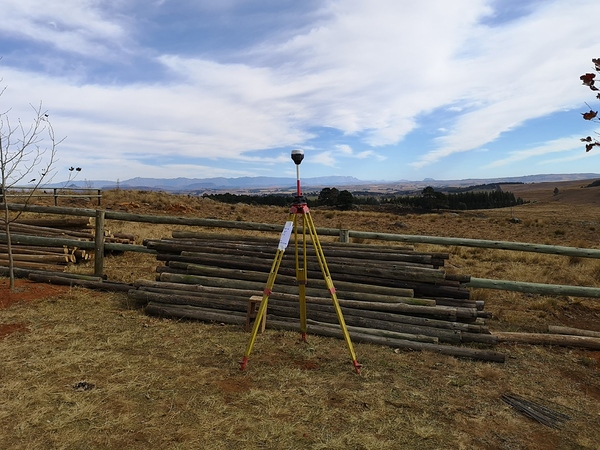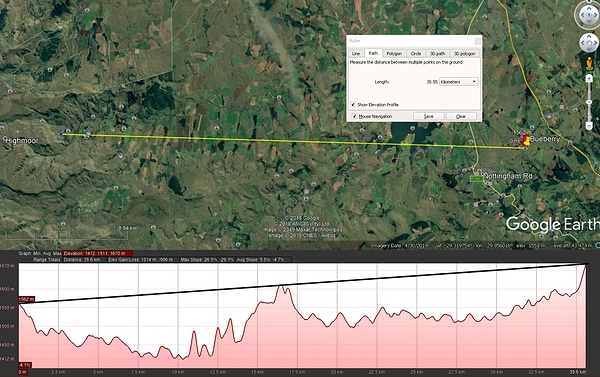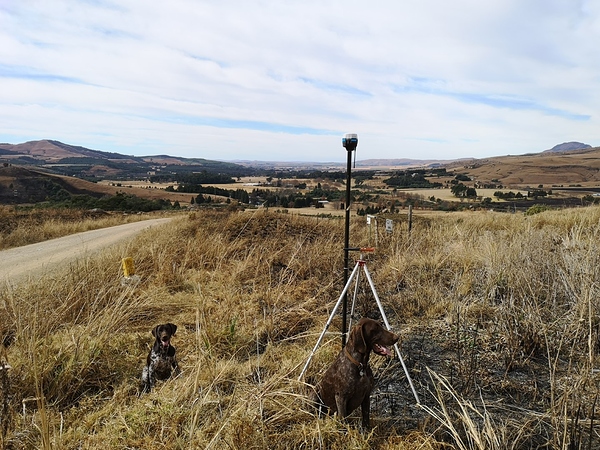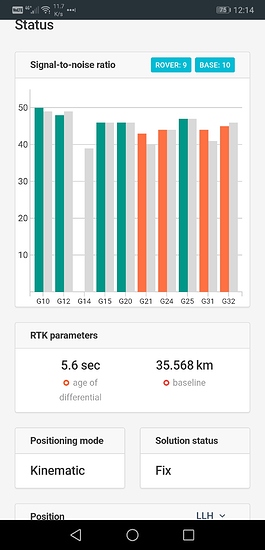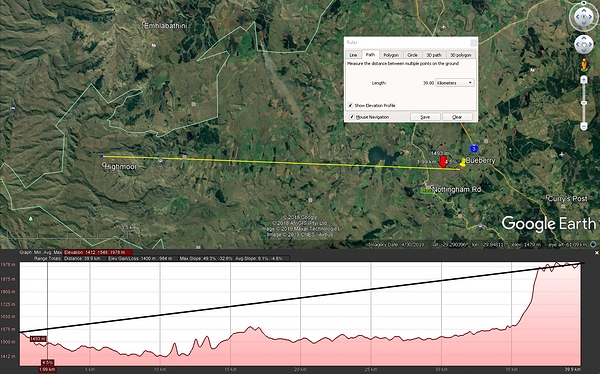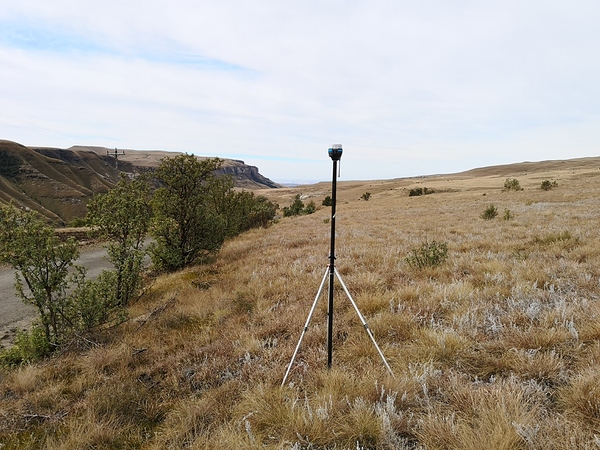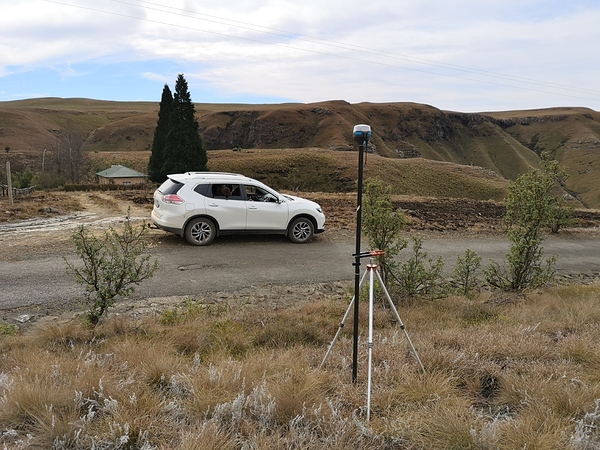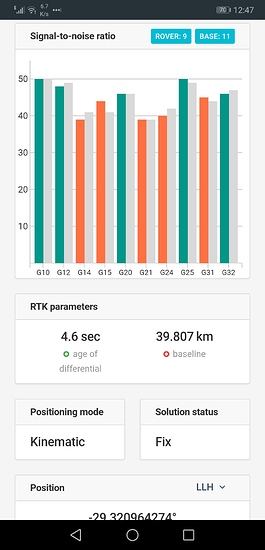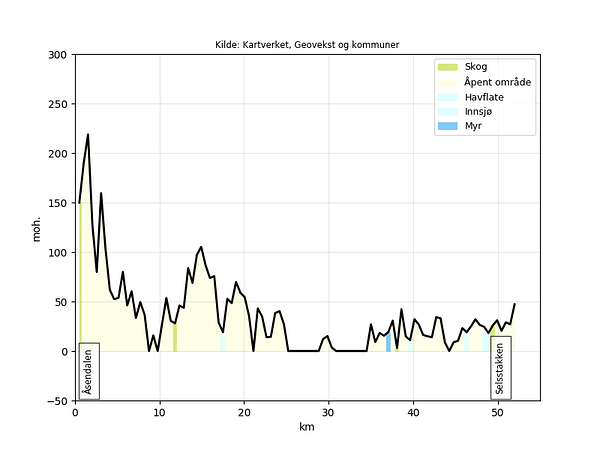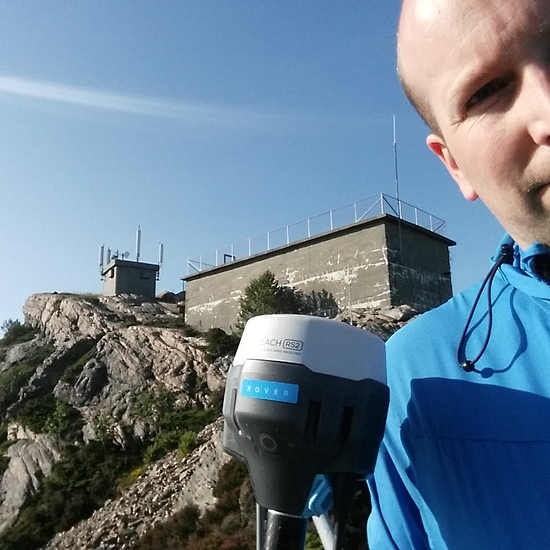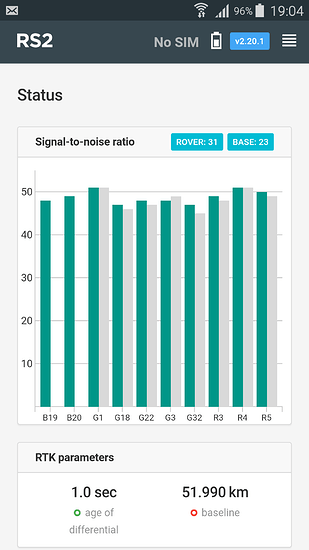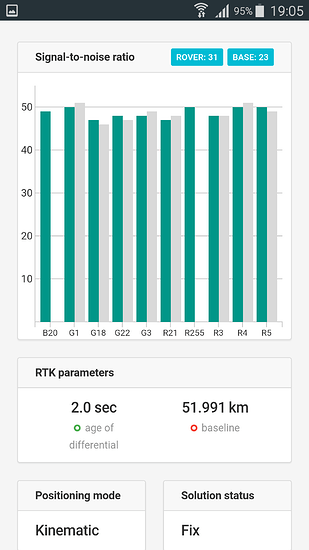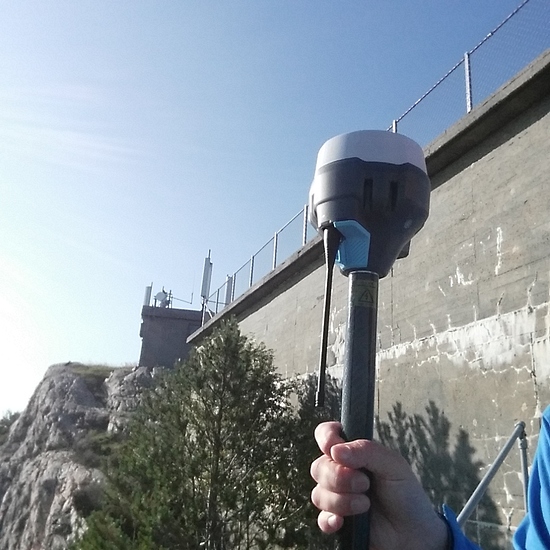The new RS2 GPS has a built in LoRa radio for RTK corrections. The corrections are sent in RTCM format at 0.1W and has a claimed range of up to 8km. A group of us beta testers came up with the idea of a competition between us to test the range of these units. Running the latest firmware ( v2.20.2), we planned a few locations, designed some RF propagation plots, filled up the tank with diesel (the car, not the RS2) and headed out.
The first rough test was done locally. I wanted to see what the penetration though features like buildings, mountains, etc was like. The base was erected on a standard tripod and tribrach. Settings used where as follows:
I decided to reduce the amount of data being transmitted to the absolute minimum so the radio wouldn’t missing any stray messages, compromising a fix.
What we initiall found was phenomenal data transfer at 6-8km away. We had no issues with communications behind vegetation, buildings, etc. What blew my mind was a few fixes we had BEHIND a mountain!
Note that the mountain is over 1km of solid granite (no tunnels!) but the signal must have bounced off the valley walls behind me. At this point I must admit that I checked to make sure that I didn’t by mistake have a NTRIP connection running!
Our next test was to check the range. As mentioned, Emlid states that the radio is only good for 8km. But we were sure we could extend that and make full use of the dual frequency RTK baseline. We chose a spot in the KwaZulu-Natal midlands in South Africa at a restaurant on top of a fairly predominate hill. The plan was to test the range at 15km, 25km, then a long push to 35km.
RF propagation plot
Base location. Note the stock equipment setup
The first 2 fixes where fairly uneventful at 15km/25km and wasn’t even recorded as the base was clearly visible.
However, as we began climbing up the pass into Highmoor Reserve, things got interesting. With the RS2 mounted on a pole and out of the car window, we found data was streaming straight away from 35km. We found a pretty place to stop and recorded this:
Since the radio signal was so strong, we decided to push on up the pass to the reserve office. I was not planning on doing this as the RF plot didn’t show much signal up there. What a surprise when we arrived at the top and signal was just as strong as ever! 39.8km away!
A fix took about 6 minutes to achieve which is normal considering that only GPS satellites where being used. We could have continued further but we sadly ran out of road access and time. This is an amazing output for such a small device and shows good design, radio (and antenna) tuning.
Despite my initial hesitation about the LoRa communication design in the RS2, this unit is a vast improvement over the previous generation in the RS. Using the LoRa’s low power design means that a full days RTK work (and well beyond) is feasible. But don’t be fooled by that. What we have seen over the past few weeks of real life testing is that it is a perfect sound and powerful enough for any job site.
Future testing will be to include other constellations and to find a test area that exceeds 40km to find the units true line of site communication limit.





